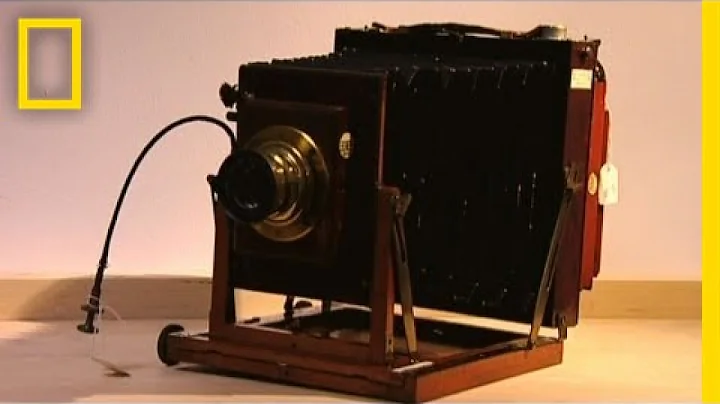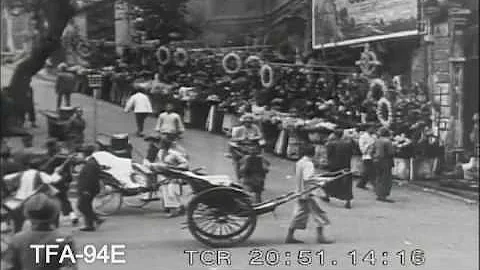
Jiming Temple
In Nanjing, there is an old saying: A Qixia Mountain is half the history of Jinling .
Among the many old photos of old Nanjing recorded by cameras, they are all inseparable from such a place - Qixia Temple.
Qixia Temple is located at the western foot of Fengxiang Peak, the main peak of Qixia Mountain. It was built in the Southern Qi Yongming Seventh Year (489). Liang Senglang preached the Three Treatises doctrine here, and is known as the founder of the Jiangnan Three Treatises Sect. Emperor Wen of the Sui Dynasty built stupas in the Eighty-three Prefectures, and his erection erection order was headed by Qixia Temple in Jiangzhou. With a history of more than 1,500 years, it is one of the four famous temples in China and the birthplace of the "Three Treatises of Buddhism" in the south of the Yangtze River.
In 1919, Master Zongyang (1861-1921), who became a monk in Jinshan, Zhenjiang, paid a pilgrimage to Jiuhua Mountain. He passed by Qixia Temple and saw its decline. So he accepted the invitation of the temple monks to abbot Qixia and tried to revitalize it. He received great support from Mr. Sun Yat-sen. . After Master Zongyang passed away, Ruoshun (1880-1943), the abbot of Qixia Temple, raised funds from various sources to further repair the temple and reshape the Buddha's body. Qixia Temple showed its vitality. Today's Qixia Temple was restored during the Republic of China.

The Three Holy Temples of Qixia Temple a hundred years ago

In 1917, Victor Xie Gelan, a famous French poet, writer, sinologist and archaeologist, came to Qixia Temple and took a precious image of a set of stupas and Thousand Buddha Rocks.


Two years later, in 1919, Master Zong Yang, the founder of the ancient Zhongxing Temple, came to Qixia Temple!

Zong Yang Master
Over the past hundred years, the photos left by Qixia Ancient Temple have also become a microcosm of the development of Buddhism in Nanjing and even China:
Taken in 1933, a photo of the perfect ordination at Qixia Temple in the autumn of the 22nd year of the Republic of China.

During the Nanjing Massacre in 1937, more than 20,000 refugees took refuge in Qixia Temple. It was the temple supervisor Master Jiran who rescued these surviving refugees and persisted for 4 months. In front of Thousand Buddha Rock, the Master and the refugees left precious video material.

In 1948, Master Zhikai took a photo at Thousand Buddha Rock in Qixia Temple. In 1937, the Master not only rescued refugees with Master Jiran, but also accepted a great disciple, who is now Master Hsing Yun..

Master Zhikai (Master Hsing Yun’s master) took a photo at Thousand Buddha Rock in Qixia Temple (photographed in 1948)

Qixia Temple during the Republic of China

Qixia Temple Wuliang Hall

In 1920, he photographed the Qixia Temple in Nanjing, and the two pictures above were taken by Changpan Dading.


It is Tiankai Rock not far from Qixia Temple. Japanese scholars were surprised to find that this is the "former site where Yuan Liaofan of the Ming Dynasty received "The Merits and Demerits" from Zen Master Yungu." Yuan Liaofan was the author of the famous "Liaofan's Four Trainings" in the Ming Dynasty. The Japanese were greatly influenced by Chinese traditional culture at that time and were familiar with history. In 1920, Tokiwa Dading photographed the Qixia Temple Relic Pagoda taken by the Japanese a hundred years ago. The Relic Pagoda of Qixia Temple captured by the Japanese a hundred years ago. In 1934, Liang Sicheng, Lin Huiyin and his wife specially inspected the stupa of Qixia Temple. I was deeply impressed and fascinated by this ancient pagoda.
Regarding their trip to Nanjing's ancient buildings, the information available for inspection today is very limited. The only direct evidence that can be directly corroborated seems to be that only Liang Sicheng included in Chapter 6, Section 6, "Five Dynasties, Song, and Song Dynasties" in his "History of Chinese Architecture". The second paragraph "Brick and Stone Towers" in "Real Objects of Liao and Jin Dynasties" has more than 400 words and 2 frames of pictures.The full text is as follows:
The stupa of Qixia Temple (pictures 79 and 80) is located in Qixia Temple, Qixia Mountain, Jiangning County, Jiangsu Province. The tower is entirely made of stone, with an octagonal plane and a total of five floors (Picture 79). The first floor of the tower is quite tall, standing on the magnificent Xumizuo and Yanglianzuo. Xumizuo has two steps at the bottom, and the bottom is a wide step base. Above the base of the steps and under the balustrade stones, they are divided into rooms by pillars. On the upper part of the stairs, there are hooks, buckets and Shu pillars to hook the railings. On the front, there are steps for raising and lowering, and on the corners, octagonal pillars are erected.


Two levels below the Xumizuo, there are inscriptions on the ground, such as the rising of the fighting, eight waves of water, dragons, phoenixes, treasures, and flowers. The carvings are extremely exquisite. The Xumizuo girdle is engraved with Buddhist traces. There are leaning pillars at each corner of the pagoda, a door shape is carved on the front, and images of Vajra Bodhisattva and others are embossed on all other sides. There is a lantern between the capitals, but there is no bracket. There is only a layer of mixed stone to support the eaves. The pagodas on the above floors are low, with two niches on each side. The eaves of each floor are carved with rafters tiles. The lower part of the long-shaped pagoda has been buried for a long time. When it was rebuilt in the 19th year of the Republic of China, the step foundations were excavated and the remains were found. A section of the check column has to be made according to the style to restore the old view (Picture 80). All reconstruction work, except for the questionable shape of the pagoda, has been carried out with great care and attention, setting an unprecedented example of repairing ancient buildings in my country. The designer is a member of the China Architecture Society, Professor Lu Shusen and Liu Dunzhen of the Department of Architecture of Central University. There is no definite record of the tower's construction year, but considering its architectural form and sculpture style, it should be a relic of the Five Dynasties and Wuyue dynasties.
The concise and concise text unmistakably records the historical remains of this famous "national treasure" cultural relic of Qixia Temple in the 1930s. It not only covers the shape, structure, current situation and evolution of the stupa, but also He gave detailed explanations and professional judgments on patterns, carvings, materials, etc., and also gave a special explanation of the reconstruction project in the 19th year of the Republic of China. He highly affirmed that this project used "remnants" to make up for "deficiencies" and restored the old outlook with "the utmost care and precision." "This is an unprecedented example of repairing ancient buildings in our country" - this passage from the pen of the first person in the preservation and maintenance of ancient Chinese buildings in modern China is "extremely irresponsible" for the extremely irresponsible things we see in the protection and use of cultural relics today. Weird phenomena such as "creating something out of nothing", "false things are mistaken for real things", and "renewing a new look" are nothing more than a wake-up call.

"The Beautiful Views of Jinling" published in 1910


The Qixia Temple built on the mountain wall in 1910
The above two pictures are from "The Beautiful Views of Jinling" compiled by the Japanese Sugie Fuzo, which was published in Hongkou, Shanghai in 1910 Issued by Nippon Hall Bookstore "Shanghai-Nanjing-Shanghai-Hangzhou-Ningbo Line", a total of four paintings in this issue , was republished by "Beijing-Shanghai-Hangzhou-Ningbo Railway Weekly" in 1930; the second picture above is the gate of Qixia Temple, which comes from " Oriental Magazine " in 1926.
It is rumored that the word "Qixia" was written by Tang Gaozong's imperial pen. During the Republic of China, Qixia Temple was a few hundred steps eastward from Qixia Street. After passing the rainbow mirror and the half-moon-shaped white lotus pond, you arrived at the mountain gate. Shadow, the position of Qixia Street has moved, and the White Lotus Pond does not seem to be half-moon shaped.

Sui Dynasty Relic Pagoda

The above two pictures are from "Tianjin Commercial News Pictorial " in 1934. The first picture is from "Health Magazine" in 1936. This is the relic stupa in the east of the palace. It was built in Renshouyuan, Emperor Wen of Sui Dynasty. (601), it has seven levels in total, made of carved stone patterns and lying on top of each other. When it was rebuilt in the Southern Tang Dynasty, it was engraved with a very vivid image of a flying Buddha in the sky.
To the east of the stupa is Thousand Buddha Rock. The Buddha statue was carved from the bank. In the golden decade of the National Government, the monks decorated the stone Buddha for the sake of pictures, but the true meaning of protecting historical sites was lost. In 1929, Xu Beihong accompanied him After the tour, teachers and students of the school wrote a letter asking for protection of Qixia historic sites.
Baodian Jingge


The first picture above comes from the "Railway Gazette: Shanghai-Nanjing-Shanghai-Hangzhou-Ningbo Line" in 1922, and the second picture above comes from "Liangyou" in 1930. Comparing the two, Qixia Temple was renovated in 1928. , increased greatly in scale, and gradually became known as Hongli.
During the Republic of China, the Beijing-Shanghai-Shanghai-Hangzhou-Ningbo Railway Bureau set up Qixiashan Station. Visitors could take the Beijing-Shanghai train there. The number of tourists increased. After the National Government established Nanjing as the capital, surrounding roads were opened successively, making travel more convenient. Every time in late autumn, On a good day, there are many people traveling together. Taking 1934 as an example, the number of visitors to the temple was around four to five hundred. If special anniversaries overlapped with weekends, the number of visitors could exceed a thousand.

Wujiang Buddhist Association took a photo to commemorate his ordination at Qixia Temple in 1935

The forty-eighth generation of the Linji Zongzong, the fifth generation of Zhongxing Qixia, the elder Zong Xinggong (1917-2020)

Xuyun Laohe Shang came to Hong Kong to give lectures, Zeng came Luyeyuan and took photos (the one sitting in the middle is the old monk Xuyun, the second from the left is Master Fa Zong)

Qixia Temple overlooking

The Huanzhou Lama Temple and Noonata completed in 1937

1940 Brick Pagoda of Hongjue Temple in Niushou Mountain

Baoen Temple (site), also known as Ashoka Temple, was built in the 10th year of Emperor Yongle's reign in the Ming Dynasty. It only took nine years to complete, and the golden green shines on people and heaven, but it is a pity that the turbulent years have turned into a scorched earth.

Nanjing Panorama
During the National Government, the situation in the south of the Yangtze River was stable. There was a saying in the Spring and Autumn Period that "the cow heads in spring and the clouds in autumn". During the prosperous days, literati and poets wrote poems and paintings during it. On the eve of liberation, around the theme of frost forest and red maple, there were red leaves at the foot of the mountain. In the restaurant, there is a red leaf photo studio in front of the stupa.
It must be mentioned that after the Republic of China, the scale of Qixia Temple gradually recovered, which was inseparable from the continuous recruitment of temple monks. In 1928, when Zhao Junhao, the founder of " Travel Magazine ", visited Qixia Temple, the abbot of the temple was still begging for alms in central Guangdong. , has not returned for a long time. After the founding of the People's Republic of China, Buddhist temples were built, the temples were restored to glory, and famous temples were gradually built. Future generations should not forget the shade planted by their predecessors when enjoying the shade.





















